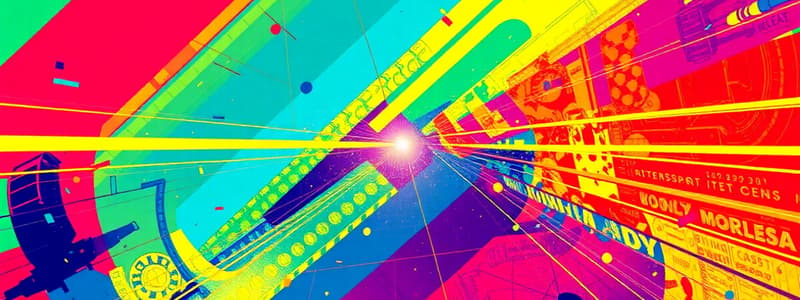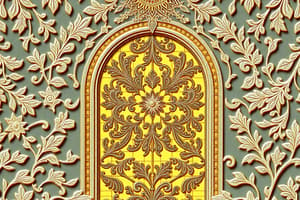Podcast
Questions and Answers
What does LASER stand for?
What does LASER stand for?
- Light Amplification by Stimulated Emission of Radiation (correct)
- Light Application by Stream Emission of Radiation
- Light Amplification and Stimulated Emission of Resources
- Luminous Amplification by Stress Emission of Radiation
CO2 lasers are primarily used for boring and welding tasks.
CO2 lasers are primarily used for boring and welding tasks.
True (A)
What is the classic wavelength of emission for CO2 lasers?
What is the classic wavelength of emission for CO2 lasers?
10.6 μm
Lasers provide _____ dimensional tolerances and accuracy, leading to superior quality products.
Lasers provide _____ dimensional tolerances and accuracy, leading to superior quality products.
Match each type of laser with its primary application:
Match each type of laser with its primary application:
What type of materials can be cut or engraved using a laser?
What type of materials can be cut or engraved using a laser?
CNC capabilities are not typically equipped in laser cutting machines.
CNC capabilities are not typically equipped in laser cutting machines.
What is the main advantage of using laser machining compared to traditional engraving processes?
What is the main advantage of using laser machining compared to traditional engraving processes?
Flashcards are hidden until you start studying
Study Notes
Laser Technology in Industrial Machining
- LASER (Light Amplification by Stimulated Emission of Radiation): a non-conventional energy source, increasingly used in industrial machining for its high precision and quality, producing work-pieces with superior tolerances, accuracy, and minimal heat-affected zone.
- CNC- controlled lasers: ensure quality and timely outputs in laser cutting machines. Varying the laser beam intensity allows for cutting and engraving different materials.
- Laser engraving vs. traditional engraving: No need for a resistive mask. The laser beam's path, controlled by the CNC system, eliminates the need for a mask.
- Types of Lasers in Cutting Machines:
- CO2 laser: Suitable for cutting, boring, and engraving; Classic wavelength is in the infrared, around 10.6 μm, but lower wavelengths are used for processing specific polymers.
- Nd laser: Used for boring and high-energy, low-repetition applications.
- Nd:YAG laser: Used for very high-power applications, like boring and engraving.
CO2 Lasers:
- First discovered lasers, most widely used in material processing.
- Emission is generated through an electric discharge within a carbon dioxide, nitrogen, and helium gas mixture.
- Offer high average power output ranging from a few Watts to 50 kW.
- Applications of CO2 lasers: Automotive industry, steel parts manufacturing, industrial marking, annealing, engraving or welding metals, plastics or wood.
- Provide excellent beam quality with a lower electrical-to-optical conversion efficiency.
Studying That Suits You
Use AI to generate personalized quizzes and flashcards to suit your learning preferences.




